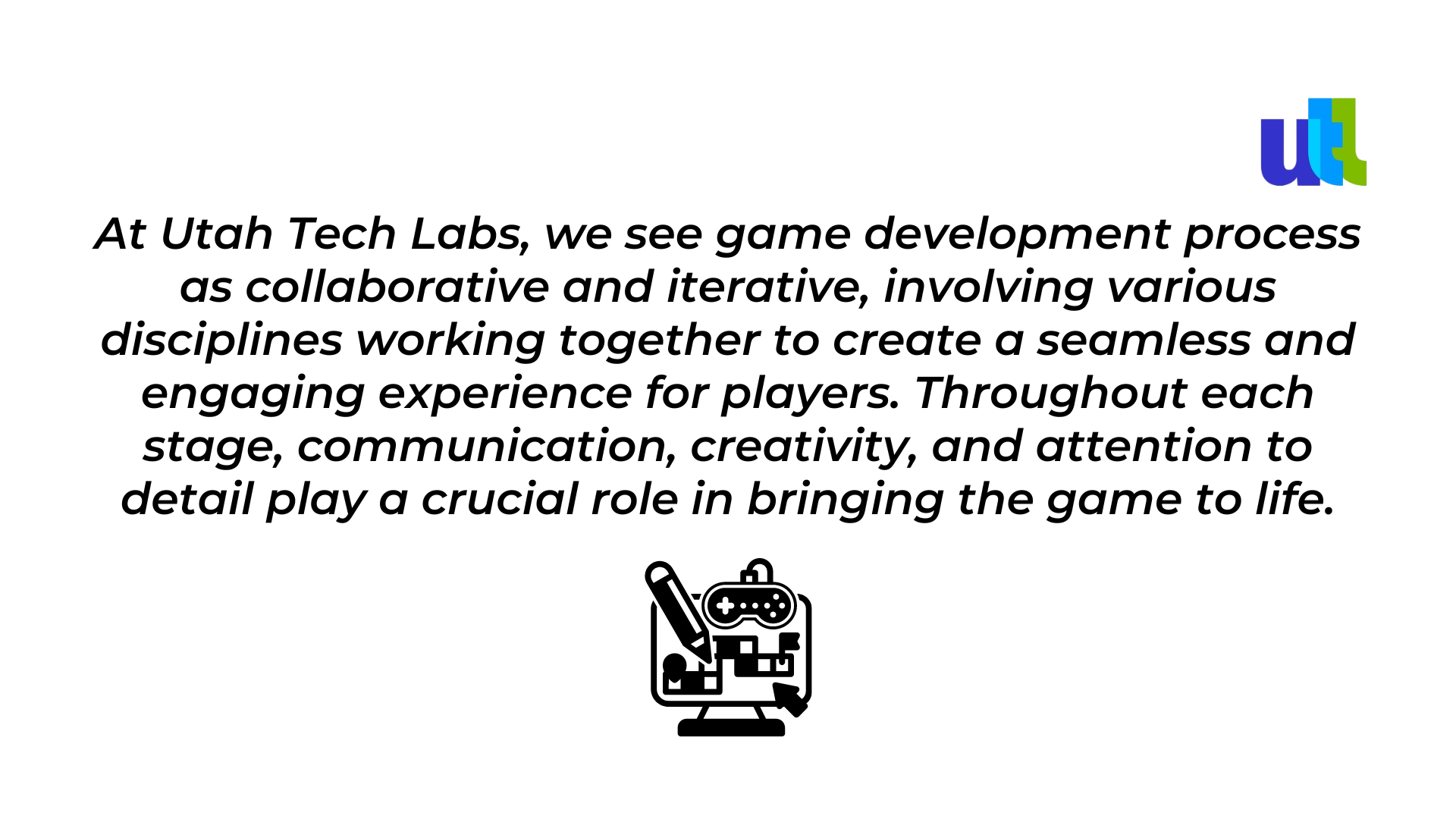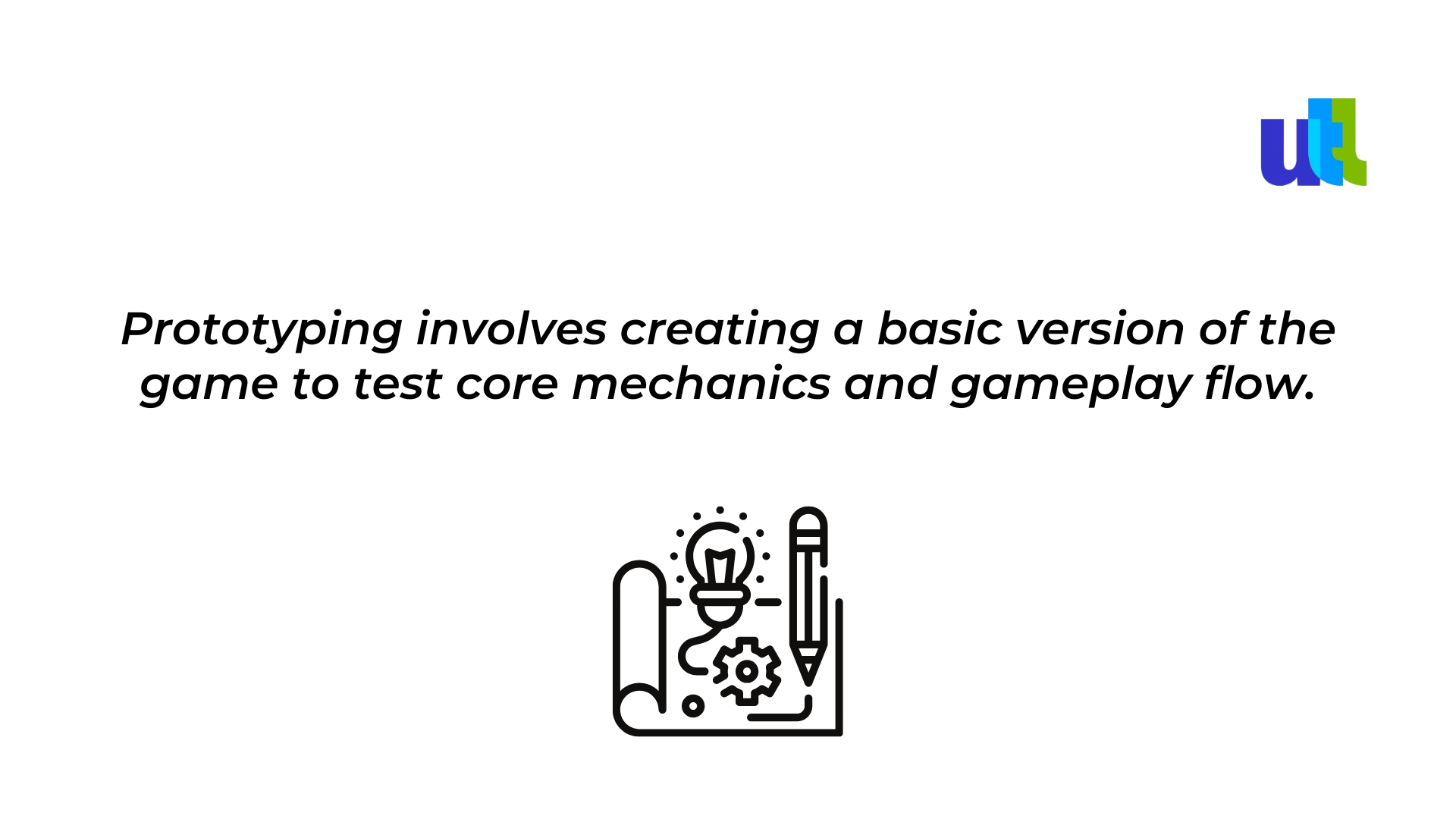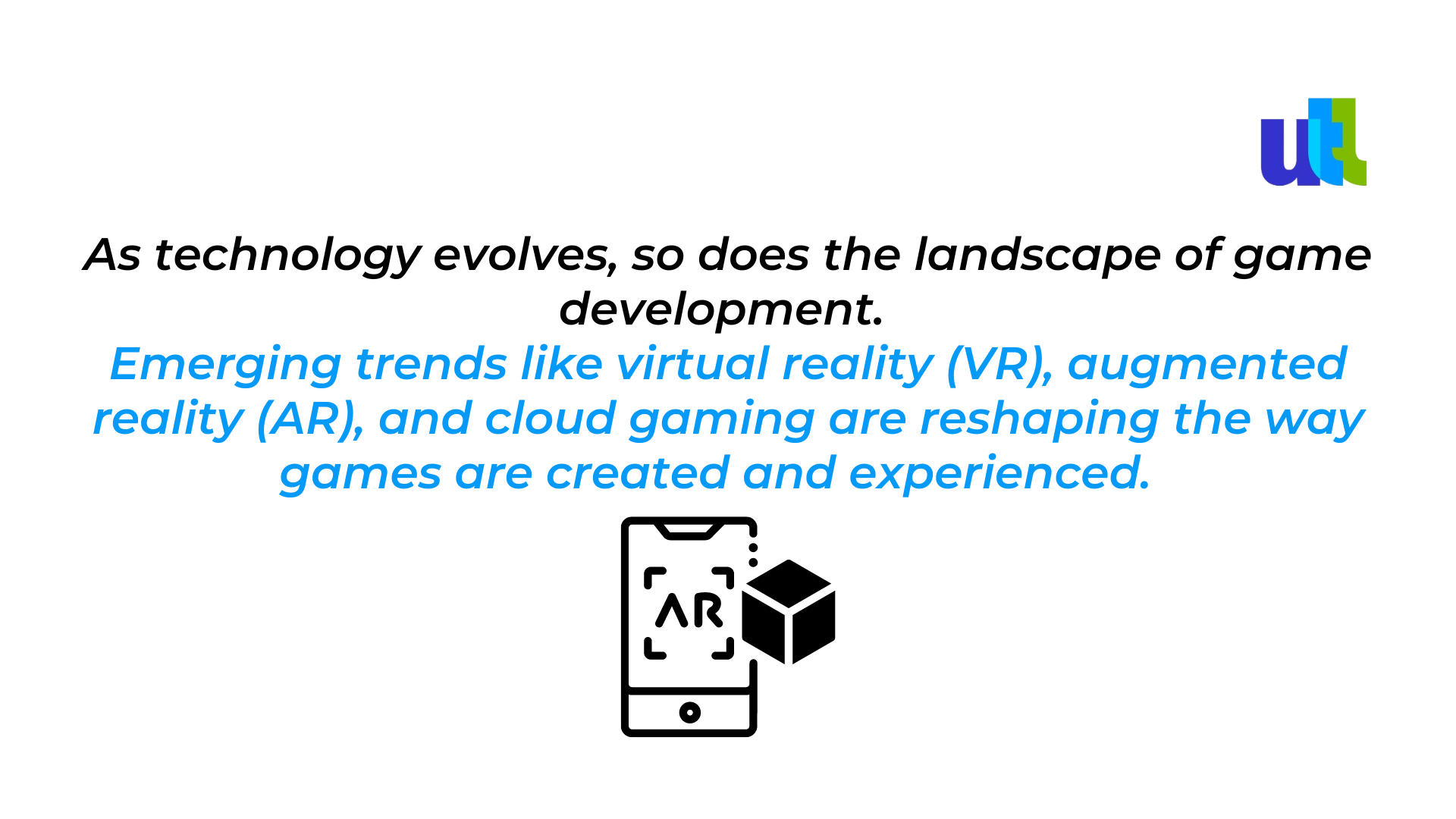In the digital age, where imagination knows no boundaries, game development emerges as a captivating art form that transforms concepts into interactive experiences. Nowadays, it's a symphony of creativity, technology, and storytelling.
In this blog, we embark on a journey into the heart of modern game development, exploring its intricacies, processes, and the enchanting realms it creates.
The Canvas of Creativity: Where Dreams Take Shape
Game development is the alchemical process of turning ideas into digital realities. Just like a painter meticulously selects colors and a sculptor shapes clay, game developers intricately code, design, and visualize to bring their visions to life.
It's an endeavor that marries artistic expression with technical prowess, culminating in an immersive universe that captivates players. Sounds even romantic, right?
Yes, but there is also the technical part.
Breaking down the game development process
The game development process is a multifaceted journey that involves creativity, collaboration, and technical expertise. It encompasses various stages, from ideation to testing, all working together to transform a concept into an engaging and polished video game.

At the heart of every game lies an idea—an ember that sparks the flames of creativity. This initial stage is where ideas are birthed, concepts are forged, and dreams are given shape.
Conceptualization. It all begins with an idea—a spark of inspiration that ignites the creative fire. Developers brainstorm themes, gameplay mechanics, characters, and stories that will form the foundation of the game.
A concept document outlines the game's core elements, mechanics, story, target audience, and design goals. This document serves as a roadmap for the development process and is crucial for successful development.
Now, it is time to move to the design phase, where mechanics are refined, levels are meticulously crafted, and characters begin to take form.
Design. Designers translate concepts into blueprints, small elements into great meanings. They sketch out levels, craft user interfaces, plan mechanics, and create a roadmap that outlines the player's journey through the game.
A design document elaborates on the concept, detailing gameplay mechanics, levels, art style, user interface, and other key aspects. This document guides the development team in creating a cohesive vision.

Now, the conceptualized, translated, and designed idea needs a language through which our visions come to life. Like composers crafting symphonies, developers write lines of code that dictate the behavior of characters, the mechanics of gameplay, and the dynamic interactions within our digital worlds.
Development. The heart of game development lies in coding. Programmers write lines of code that dictate how the game functions, from character movements to complex algorithms that simulate physics, AI behaviors, and interactions.
And it's here that technology bows to artistry, as visuals become the windows to our game's soul – moving to the next phase.
Art and animation: Visual artists create the stunning landscapes, characters, and assets that populate the game. Animators breathe life into these elements, making them move, react, and emote as players navigate the virtual world.
Sound and music. Sound designers and composers craft the auditory ambiance of the game. From ambient sounds that immerse players in the environment to music that evokes emotions, audio enhances the overall experience.
Level design. Level designers craft the game's levels, puzzles, challenges, and environments, ensuring a balanced and engaging gameplay experience.
Now, when everything is almost ready, we can move to the fun part. Playtesting becomes a dance of exploration. Each player's experience is a canvas of feedback, enabling us to refine mechanics, balance gameplay, and sculpt a seamless progression.
Testing and quality assurance. Rigorous testing ensures that the game is polished and bug-free. Quality assurance teams identify glitches, errors, and balance issues that need to be addressed before release.
Have you ever heard of Testing Early Builds? The development team conducts playtesting to identify early issues, bugs, and areas for improvement.
Iteration and refinement. The development process often involves iterations. Developers gather feedback, make improvements, and refine the game's mechanics and design based on testing results and player input.
And…it is not the end. The post-deployment stage is a testament to our commitment as developers. It's a journey of nurturing, growing, and adapting — the ever-evolving relationship between creators and players.
Game engines: The architects of virtual worlds
Game engines are the tools that empower developers to build their virtual realities. These engines provide a framework for coding, rendering graphics, managing assets, and creating interactive experiences. Prominent game engines like Unity and Unreal Engine have democratized game development, enabling both indie developers and large studios to bring their visions to life.
The impact and influence of indie game developers
The democratization of game development tools and platforms has led to the rise of indie game developers. Independent creators have brought unique, experimental, and emotionally resonant experiences to the forefront. Games like "Undertale," "Celeste," and "Hollow Knight" showcase the power of indie developers to touch hearts and challenge conventions. However, there are technical innovations that are having even a larger impact on the industry.

VR and AR technologies redefine player immersion. VR allows for unparalleled levels of presence and interactivity, while AR enhances real-world environments with interactive digital elements.
These technologies are already reshaping the way players experience and interact with games.
While gameplay mechanics and technology are integral, storytelling remains at the heart of game development. Game developers are increasingly focusing on narrative-driven experiences that evoke emotions and tell compelling stories.
From epic quests and character-driven dramas to puzzle-solving mysteries, stories in games are multifaceted, evolving based on player choices and actions.
As games evolve into powerful storytelling mediums, players are drawn into immersive worlds that challenge their perceptions and evoke empathy. This trend blurs the line between traditional storytelling and interactive experiences.
Some of the other trends 2023 include:
1. Metaverse realities
The concept of the metaverse, a shared digital universe, is taking the gaming world by storm. It's an interconnected virtual space that merges elements of gaming, social interaction, commerce, and entertainment. Players can seamlessly move between various virtual experiences, creating a unified and immersive digital existence.
Metaverse technology transforms traditional gaming into a dynamic, interconnected ecosystem. Developers are crafting metaverse experiences that enable players to socialize, create, trade, and play across multiple virtual worlds. This trend has the potential to revolutionize the way we perceive online interaction and entertainment.
2. NFTs and blockchain integration
Non-fungible tokens (NFTs) and blockchain technology have gained traction in the gaming industry. NFTs allow developers to tokenize in-game assets, such as skins, weapons, and characters, providing players with true ownership and the ability to trade these items securely.
Players can now buy, sell, and trade digital assets with provable scarcity and authenticity. This trend has the potential to redefine how in-game economies operate, enabling players to have a more active role in shaping their gaming experiences.
3. AI-driven game design
Artificial intelligence is being leveraged to create dynamic and personalized gaming experiences. AI algorithms analyze player behaviors, adapt game mechanics, and generate content based on individual preferences.
It also enables developers to create procedurally generated content that keeps gameplay fresh and unpredictable.
All in all, game development world is in constant flux, driven by technological breakthroughs and changing player expectations.
A world of infinite imagination
Conclusions…
Game development is the symphony of imagination and technology, the intersection of artistry and engineering. It's the process of breathing life into dreams, enabling players to explore, learn, and escape into meticulously crafted digital realms.
From the coding lines to the pixelated landscapes, game development is an ode to creativity's boundless potential. In a world where the only limitation is the mind's horizon, game developers are the architects of worlds waiting to be explored, challenges waiting to be conquered, and stories waiting to be told.
This is how we see it at Utah Tech Labs.
For free consultation on game development, click here.
----------------------------------------------------------------------------------------------
View the full presentation:
WRITTEN BY
Sofia Kutko
2023-08-31


































































































































































































